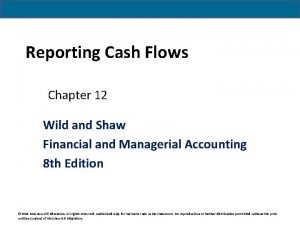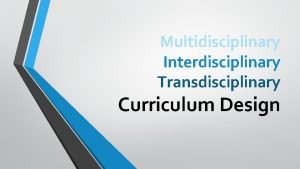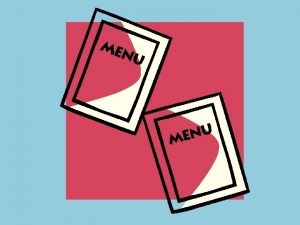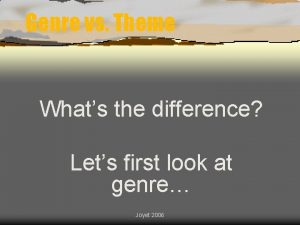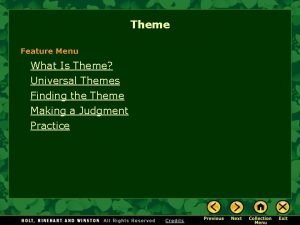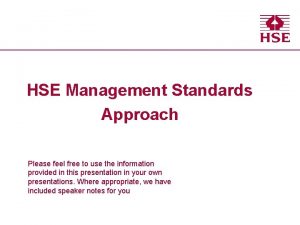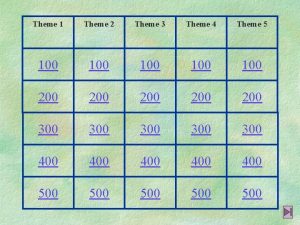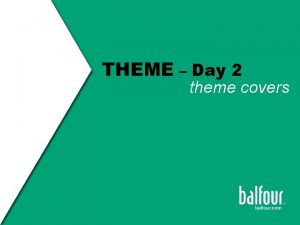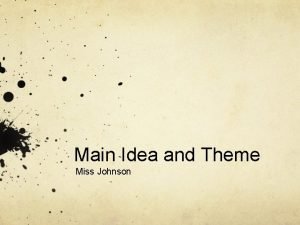Theme and Concept Analysis Theme Concept Standards Determine







- Slides: 7

Theme and Concept Analysis

Theme & Concept Standards • Determine an author’s point of view or purpose in a text and analyze how an author uses rhetoric to advance that point of view or purpose. (9. 5. 6. 6) • Analyze how the author unfolds an analysis or series of ideas or events, including the order in which the points are made, how they are introduced and developed, and the connections that are drawn between them. (9. 5. 3. 3) • Analyze in detail how an author’s ideas or claims are developed and refined by particular sentences, paragraphs, or larger portions of a text (e. g. , a section or chapter). (9. 9. 5. 5) • Determine the meaning of words and phrases as they are used in a text, including figurative, connotative, and technical meanings; analyze the cumulative impact of specific word choices on meaning and tone (e. g. , how the language of a court opinion differs from that of a newspaper). (9. 5. 4. 4) • Analyze seminal U. S. documents of historical and literary significance, including how they address related themes and concepts. (9. 5. 9. 9)

PURPOSE: What is the writer’s purpose? Identify for what purpose (reason) the piece was written. Questions to ask yourself in order to pinpoint the author’s purpose for writing this piece: • • In what ways does he convey his message? How would one perceive the speaker giving this speech or crafting this poem/story? What is the writing saying about the issue ? What is the emotional state of the speaker? Is the speaker trying to persuade, and if so what action would he like the audience to take? Is the speaker trying to inform, and if so about what? How is the piece supposed to make the reader feel?

AUDIENCE: Who is the audience? Identify which group, type of reader, or individual for the piece was written. Questions to ask yourself in order to pinpoint the occasion: • • Does the speaker identify an audience? What assumptions can be made about the audience? Is it a mixed racial/gender group? Is it focused toward a specific social class or political party? Who was the piece created for? Are there any words or phrases that are unusual or different which may indicate a specific reader? Does the speaker use language that is specific for a unique audience? Note: Be precise in your label: for instance, rather than simply saying the audience is “old people, ” narrow it down even tighter until you craft something more like the audience is, “individuals who are about to retire” or “the narrator’s grandparent who has recently become ill. ”

TONE: What is the tone of the text? Identify the tone (attitude) of the piece using specific words and phrases including figurative, connotative and technical meanings. Questions to ask yourself in order to identify the tone: • • • What is the author’s attitude about the subject? Is the author being sarcastic or sincere? How is the author perceived by the audience? What was the author’s mood when writing this piece? What is the author’s point-of-view in regards to this topic? What is the speaker’s attitude about the main idea of the piece? Note: the tone often cannot be captured with a single word. Often a phrase or a sentence is necessary. When one word will do, always insure that it is the best word: stay away from overly general descriptors such as “dark, ” “nice, ” and/or “sad. ”

THEME: What is text addressing thematically (main idea)? Identify a theme that works for both pieces of literature. Questions to ask yourself in order to identify theme: • What does the text say about the human experience, motivation, or condition? • What idea does the author want you take away concerning the human experience? Follow the six rules of theme. 1. 2. 3. 4. 5. 6. It should be expressed in a statement with a subject and a predicate (a complete sentence) It should be stated as a generalization about the human experience: specific characters, locations, and dates are unnecessary Avoid making a generalization larger than what is justified by the terms of the story A theme is the central and unifying concept of a piece, thereby it must account for all major details in the text and cannot be contradicted by any details in the text (nor can it rely upon supposed facts) There is no one way to state a theme: one theme may be phrased in a variety of ways Avoid reducing a theme to a familiar saying or cliché that has been heard by many, such as “Don’t judge a book by its cover, ” or “You must walk in another man’s shoes in order to fully understand him. ”

ANALYSIS • Write a paragraph response in which you compare themes and concepts in the two texts (of historic and literary significance).
 Factors necessary for appropriate service standards
Factors necessary for appropriate service standards The three step analysis to determine cash provided
The three step analysis to determine cash provided What is interdisciplinary
What is interdisciplinary The menu expresses the concept and theme through
The menu expresses the concept and theme through Is genre and theme the same thing
Is genre and theme the same thing What is the difference between theme and universal theme?
What is the difference between theme and universal theme? Hse management standards analysis tool
Hse management standards analysis tool Hsg218
Hsg218

